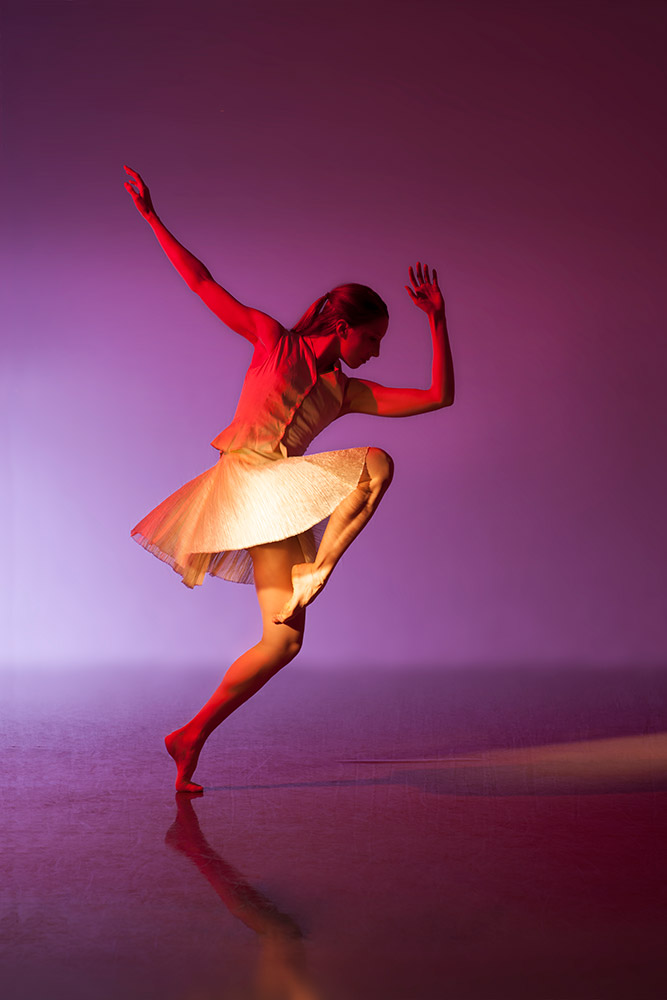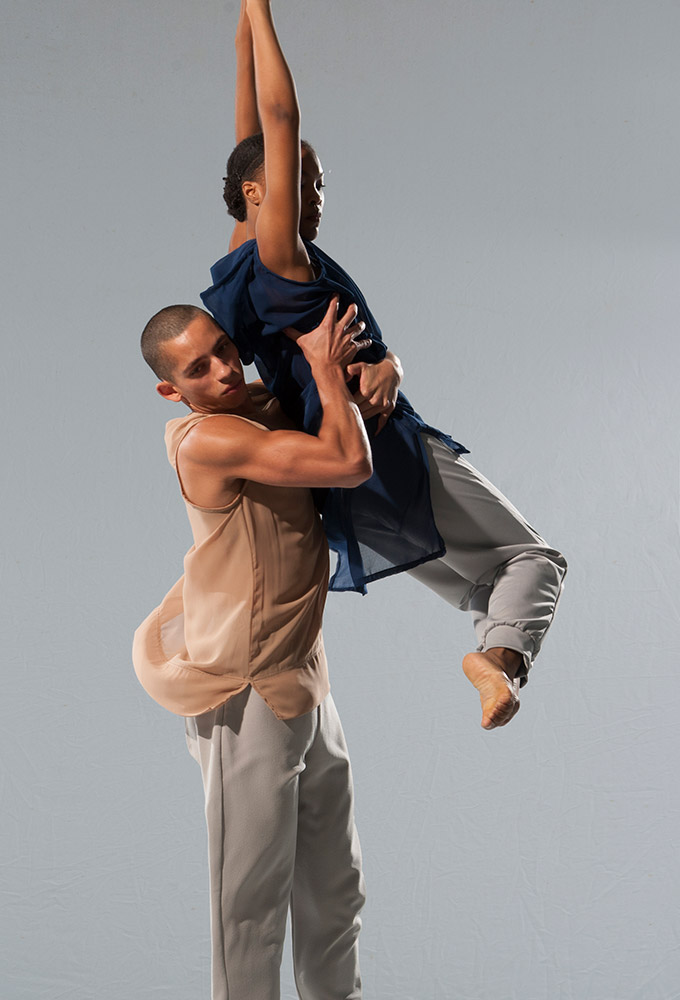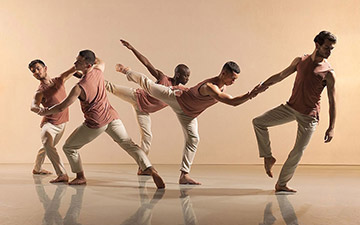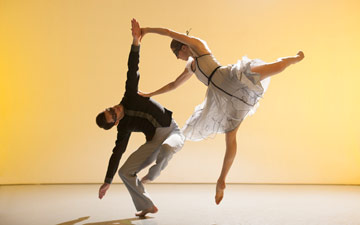
© Tony Nandi. (Click image for larger version)
Richard Alston Dance Company
Alston at Home: Bari, Nowhere Slowly excerpt, Blue Schubert Fragments, Night of a 100 Solos excerpt, Isthmus, Red Run, Detour
★★★★✰
London, The Place
27 November 2019
www.richardalstondance.com
www.theplace.org.uk
Richard Alston’s title for his company’s last tour before it closes in 2020 is Final Edition. The autumn run ended with four performances at The Place, in a programme aptly called Alston At Home. The Place has been his artistic home for fifty years, ever since he started his career as a student at the newly opened London Contemporary Dance School in 1967. His own company has been based there for 25 years, but the time has come, according the Arts Council of England, to transfer its subsidy to younger artists. So it won’t be seen at The Place again: the very last performances will be at Sadler’s Wells in March next year.
Alston himself will carry on creating for other companies, other dancers. Poignantly, his new piece for the At Home programme was choreographed for ten LCDS graduating students who might have expected to audition for his company. Called Bari, after the town in southern Italy, it’s a couples dance to pizzica music, similar to that for the tarantella. Fast and folk-based, Bari separates the sexes in linked lines, then brings them together in pairs, some same-sex. Alston leaves us wanting more, as Frederick Ashton always recommended.
The first half of the programme consisted of short pieces from earlier works, starting with a solo and duet from Nowhere Slowly, Alston’s oldest existing choreography from 1970. As a beginner, young Richard wasn’t to know what a cliché of contemporary dance running around the stage would prove to be. Once he did know, running was always for a reason, not to use up time and space. The Nowhere Slowly duet, originally for himself and fellow student Siobhan Davies, danced here by Monique Jonas and Nahum McLean, treats the couple as equals, negotiating their moves together. The choreography is not about their relationship but the rise and fall of Terry Riley’s music.

© Chris Nash. (Click image for larger version)
Blue Schubert Fragments from 1972 was part of an experiment with the future film-maker Sally Potter to combine live dancers with projections of themselves. Pared down, seven dancers in monochrome outfits perform in unison to Schubert’s Death and the Maiden string quartet, before splitting to face different directions, each elaborating moves they did earlier. It’s easy to see the influence of Merce Cunningham’s choreography, which made a great impression on Alston in the 1970s – although, unlike Cunningham, he has always choreographed to music.
As a tribute to Cunningham’s Centennial celebrations this year, solos revived for the Barbican’s Night of a 100 Solos in April were reprised for the At Home programme by Siobhan Davies and Elly Braund, who had performed them in the Barbican theatre. Braund, in pinky red lycra, skittered with controlled clarity, holding balances and co-ordinating twists and angles of her torso and limbs. She seemed to shake a leg in time to John King’s woozy music, which must presumably have been a coincidence.
White haired Davies, lean in grey-black top and trousers, moved with deliberation, catching at passing ideas with her hands. In the Barbican Event, she seemed to be channelling Cunningham in his later years, when, crippled by rheumatism, he needed the support of a chair back. Here, she was her own woman, following her own rhythms even when she appeared to be standing stock-still. Her presence was a reminder that she and Alston go back a long way as performers and choreographers.

© Tony Nandi. (Click image for larger version)
Alston had created Isthmus to the percussive music of Joe Kondo as a present for Bob Lockyer’s 70th birthday in 2012. A brief quartet, it shows off its dancers’ speed, stamina and accuracy, with Nahum McLean an impressive newcomer for the company’s final season. Jason Tucker, who joined as an apprentice in 2018, danced the mesmerising opening solo in Red Run (1998), devouring space without resorting to running. A duet for two men, Joshua Harriette and Niall Egan, is a contest between need and trust to a dark cello section of Heiner Goebbels’s sinister sounding score. Red Run combines implications of fraught relationships with purely formal interplay between trios, solos and duets.
Unexpectedly, after what seems to be a group finale, a woman detaches herself, hiding her face in sobs until she is cast, face down, on the floor, abandoned by the others. The cause of her grief is unknown, mourned in Goebbel’s music. It’s one of Alston’s most powerful works, though the strangely mottled costumes, redesigned for this revival, do it no favours.

© Chris Nash. (Click image for larger version)
The programme ended with Detour, a recent work by Martin Lawrance, the company’s associate choreographer. Set to two compositions for marimbas, it is unremittingly confrontational. In duets, women are swung, tugged and yanked, walking away aggressively. Every encounter appears fractious. Monique Jonas, shrouded in a hoodie, is whirled around like a weapon. Lawrence’s choleric temperament complements Alston’s sanguine one, but it concludes the programme on a furious note – which may be what Alston’s company feels about its obligatory retirement.

















You must be logged in to post a comment.